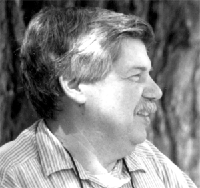| |
| |
|
STEPHEN JAY GOULD: THE PATTERN OF
LIFE'S HISTORY [5.23.01] There is no progress in
evolution. The fact of evolutionary change through time doesn't
represent progress as we know it. Progress isn't inevitable.
Much of evolution is downward in terms of morphological complexity,
rather than upward. We're not marching toward some greater
thing.
Introduction —
JB STEPHEN JAY GOULD was an evolutionary biologist, a paleontologist, and a snail geneticist; professor of zoology at Harvard University; MacArthur Fellow; author of, among others, Ontogeny and Phylogeny, The Mismeasure of Man, The Flamingo's Smile, Wonderful Life, Bully for Brontosaurus, Dinosaur in a Haystack, Rock of Ages, Full House, I Have Landed, and The Structure of Evolutionary Theory. Stephen Jay Gould's Edge Bio Page Stuart
Kauffman: Steve is extremely bright,
inventive. He thoroughly understands paleontology; he
thoroughly understands evolutionary biology. He has
performed an enormous service in getting people to think
about punctuated equilibrium, because you see the process
of stasis/sudden change, which is a puzzle. It's the
cessation of change for long periods of time. Since
you always have mutations, why don't things continue
changing? You either have to say that the particular
form is highly adapted, optimal, and exists in a stable
environment, or you have to be very puzzled. Steve has
been enormously important in that sense.
STEPHEN
JAY GOULD
THE
PATTERN OF LIFE'S HISTORY I would like to propose that the modal complexity of life has never changed and it never will, that right from the beginning of life's history it has been what it is; and that our view of complexity is shaped by our warped decision to focus on only one small aspect of life's history; and that the small bit of the history of life that we can legitimately see as involved in progress arises for an odd structural reason and has nothing to do with any predictable drive toward it. I'm working on an incubus of a project on the structure of evolutionary theory, an attempt to show what has to be altered and expanded from the strict Darwinian model to make a more adequate evolutionary theory. Basically, there are three themes. The first is the hierarchical theory of natural selection--selection operating on so many levels, both above and below. Richard Dawkins, who still wishes to explain virtually everything at the level of genic selection, is right about one thing; gene selection does operate. He's wrong in saying that it's the source of evolution; it's a source. I don't know what the relative strength and power of the levels are — it depends on the particular problem — but gene selection is not the dominant one, by any means. It certainly happens; it may be responsible for the increase in the number of multiple copies of some kinds of DNA within evolutionary lineages, for example; it's responsible for some things
|
| John
Brockman, Editor and
Publisher |
| |Top|
|

